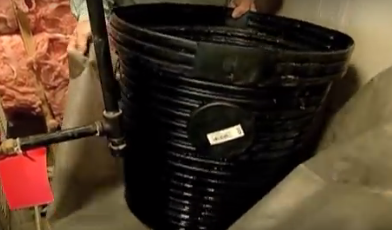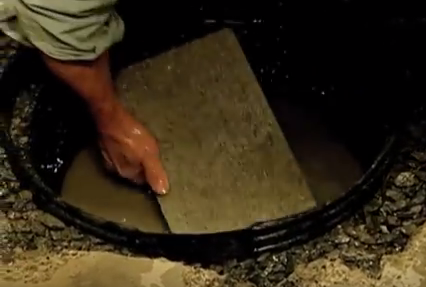What Is a Sump Pump? It Keeps Your Home Out of Hot Water
What is a sump pump? It’s a device with one goal in life: to keep your basement or crawl space from flooding, coming to your rescue when your home is in hot water—or any water, in fact.
“Sump pumps can help you avoid water damage,” says Blake Jeffery, a spokesman for the Sump and Sewage Pump Manufacturers Association, based in Indianapolis. “It’s your best defense against flooding.”
Here’s what you need to know about this unsung hero in your home.
Do you need a sump pump?
First things first: If your basement is always dry, you probably don’t need a sump pump. But according to the American Society of Home Inspectors, more than 60% of U.S. homes experience below-ground wetness. Even if flooding doesn’t happen, moisture alone can lead to mold and mildew growth that can cause health problems.
Whether you deal with dampness or a deluge, a sump pump can help. In some areas, sump pumps are required by building codes, particularly in flood-prone areas (high flood season happens in March and April).
How sump pumps work
A sump pump, installed under your basement floor or crawl space, collects groundwater as it rises and threatens to invade your home through cracks in the foundation. If flooding occurs, your sump pump acts like a drain, sucking up the water and pumping it up through a pipe to drain away from your house.
Two types of sump pumps are the most common:
Submersible sump pump: The pump sits in a pit under the surface of your basement floor. It has a life span of five to 15 years. Pedestal pump: This pump is up above the basin (and the water collecting in it). As such, this pump may sound louder, but it lasts longer (20 to 30 years). You can also stash this pump in the closet to dampen the noise.
Sump pumps are powered by electricity supplied by a standard wall outlet fitted with a ground-fault circuit-interrupter (GFCI), which prevents electrocution. Some pumps have a backup battery, which is a fail-safe measure in case power goes out during a storm.
How much does a sump pump cost?
An average sump pump costs $300, according to CostHelper.com. Price is affected by the pump’s material—plastic is cheaper than stainless steel or cast iron—and how high the sump pump must move the water up your foundation and out the house. Add in the cost of a basin, gravel, and cement, and you’ll end up paying around $350.
Hiring a pro to install the basin and pump will cost you an additional $250 to $600 in labor. While it is possible to install a sump pump yourself, if your flooring is cement, you will need a jackhammer to punch through and dig a hole for your basin. You will also need to insert a hole through your home’s siding (using an electric drill with a circular cup bit) to insert the pipe that will shuttle basin water away from your house.
So, you might want to think carefully before doing this yourself. But if you do, here’s how:
How to install a sump pump
Here’s a submersible sump pump with a black float which rises and switches on the pump when water fills the pump pit. When the water level goes down, the float falls and the pump shuts off.

The black float turns this pump on and off.
This Old House/YouTube
Step No. 1: Dig a hole through the concrete floor into the ground, which will hold the pump basin. The basin should be installed flush with the floor.

Break up the basement floor to create a hole for the sump pump basin.
This Old House/YouTube
Step No. 2: Wrap the outside of the basin with filter fabric (shown in photo below) to keep silt from entering the basin and jamming up the pump.

Wrapping the basin with filter fabric prevents the pump from becoming obstructed.
This Old House/YouTube
Step No. 3: Insert the basin in the hole and fill it with a couple of inches of gravel or chopped-up concrete. Then add flat pavers to give the pump a stable surface to sit on.

Place a flat stone in the basin to support the pump.
This Old House/YouTube
Step No. 4: Place the pump on the paver.

Gently set the pump in the basin.
This Old House/YouTube
Step No. 5: Attach PVC pipe to the pump and run it up and out the foundation wall to an area of your yard that slopes down and away from your house.

This pipe carries water in the basin out of your home.
This Old House/YouTube
Step No. 6: Patch up the ragged edge around your basin with wet concrete. Plug in the pump, install a grate on top, and you’re ready to go.

Now you’re ready to plug in the pump.
This Old House/YouTube
How to maintain your sump pump
Always make sure the unit is plugged into the GFCI outlet and the cord isn’t frayed. Check the discharge pipe to make sure it isn’t filled with dirt, gravel, and rocks. Make sure the grading below the discharge pipe runs away from your house. Remove debris from the pit that can obstruct the pump float. Test the pump annually by pouring water into the basin and watching the pump activate. Replace backup battery every two to three years.
The post What Is a Sump Pump? It Keeps Your Home Out of Hot Water appeared first on Real Estate News & Advice | realtor.com®.


